Gerard Dillon RHA RUA (1916-1971) The Long Road Oil on canvas, 45 x 54cm (17.75 x 21.25'') Signed Exhibited: Dublin, The Dawson Gallery; Dublin, Municipal Gallery of Modern Art, Gerard Dillon Retrospective, 1973, catalogue No. #90 Provenance: Collection Mr & Mrs Eric Baird, Co. Wicklow The image of the pierrot, harlequin or clown has been used as a device by painters for over three centuries. There are examples in the work of artists such as Tiepolo, Watteau, Goya and Picasso where this character has been used to depict or personify tragedy or the folly of man. Dillon was no doubt inspired by the art historical references when he began to use the pierrot figure in representing his anxiety which developed as his three brothers all passed away at roughly the same time in their lives from the same heart related condition. Dillon went through a remarkable range of styles but his later works have this consistent quality or preoccupation with death and so the present work is firmly of this genre. James White in his biography of Dillon describes the theme of the ...'' artist as clown or masked pierrot floating through his pictures as a dreamer, perhaps representing himself escaping from realities caused by the deaths of his three brothers who had died successively over a few years from a health problem which he feared he shared and he forecast to his friends that he too would die from the same cause when he was 55.'' 'The Long Road' differs in tone from many of the other 'pierrot' pictures of the period insofar as the artist has seemingly juxtaposed in a comic fashion the four figures -representing the four brothers, including himself, - with the brilliantly coloured landscape, full of striped fields and ochre coloured hills and further topped off with the 'pinata' style cat perched, standing atop the coffin which is further decorated with an elaborate spotted pink bow. 'The Long Road' dedicates itself to Dillon's challenging journey towards his own destiny but with the tragic/comic assistance of a 'road map'. The spirituality of Dillon's late works are defined most clearly in this painting and while at first glance the viewer may think that the subject has a morbidity which is difficult to get past - the artist rewards the onlooker who is prepared to consider their own human frailty. Dillon described pictures from this period in a way which could well be describing the present work - ' ...cheerful in colour,has a humour with underlying sadness about it - is poetic (I think). Is very subconscious, indeed they all come from the side of me that's ''over there''.' Gerard Dillon RHA RUA (1916-1971) The Long Road Oil on canvas, 45 x 54cm (17.75 x 21.25'') Signed Exhibited: Dublin, The Dawson Gallery; Dublin, Municipal Gallery of Modern Art, Gerard Dillon Retrospective, 1973, catalogue No. #90 Provenance: Collection Mr & Mrs Eric Baird, Co. Wicklow The image of the pierrot, harlequin or clown has been used as a device by painters for over three centuries. There are examples in the work of artists such as Tiepolo, Watteau, Goya and Picasso where this character has been used to depict or personify tragedy or the folly of man. Dillon was no doubt inspired by the art historical references when he began to use the pierrot figure in representing his anxiety which developed as his three brothers all passed away at roughly the same time in their lives from the same heart related condition. Dillon went through a remarkable range of styles but his later works have this consistent quality or preoccupation with death and so the present work is firmly of this genre. James White in his biography of Dillon describes the theme of the ...'' artist as clown or masked pierrot floating through his pictures as a dreamer, perhaps representing himself escaping from realities caused by the deaths of his three brothers who had died successively over a few years from a health problem which he feared he shared and he forecast to his friends that he too would die
Gerard Dillon RHA RUA (1916-1971) The Long Road Oil on canvas, 45 x 54cm (17.75 x 21.25'') Signed Exhibited: Dublin, The Dawson Gallery; Dublin, Municipal Gallery of Modern Art, Gerard Dillon Retrospective, 1973, catalogue No. #90 Provenance: Collection Mr & Mrs Eric Baird, Co. Wicklow The image of the pierrot, harlequin or clown has been used as a device by painters for over three centuries. There are examples in the work of artists such as Tiepolo, Watteau, Goya and Picasso where this character has been used to depict or personify tragedy or the folly of man. Dillon was no doubt inspired by the art historical references when he began to use the pierrot figure in representing his anxiety which developed as his three brothers all passed away at roughly the same time in their lives from the same heart related condition. Dillon went through a remarkable range of styles but his later works have this consistent quality or preoccupation with death and so the present work is firmly of this genre. James White in his biography of Dillon describes the theme of the ...'' artist as clown or masked pierrot floating through his pictures as a dreamer, perhaps representing himself escaping from realities caused by the deaths of his three brothers who had died successively over a few years from a health problem which he feared he shared and he forecast to his friends that he too would die from the same cause when he was 55.'' 'The Long Road' differs in tone from many of the other 'pierrot' pictures of the period insofar as the artist has seemingly juxtaposed in a comic fashion the four figures -representing the four brothers, including himself, - with the brilliantly coloured landscape, full of striped fields and ochre coloured hills and further topped off with the 'pinata' style cat perched, standing atop the coffin which is further decorated with an elaborate spotted pink bow. 'The Long Road' dedicates itself to Dillon's challenging journey towards his own destiny but with the tragic/comic assistance of a 'road map'. The spirituality of Dillon's late works are defined most clearly in this painting and while at first glance the viewer may think that the subject has a morbidity which is difficult to get past - the artist rewards the onlooker who is prepared to consider their own human frailty. Dillon described pictures from this period in a way which could well be describing the present work - ' ...cheerful in colour,has a humour with underlying sadness about it - is poetic (I think). Is very subconscious, indeed they all come from the side of me that's ''over there''.' Gerard Dillon RHA RUA (1916-1971) The Long Road Oil on canvas, 45 x 54cm (17.75 x 21.25'') Signed Exhibited: Dublin, The Dawson Gallery; Dublin, Municipal Gallery of Modern Art, Gerard Dillon Retrospective, 1973, catalogue No. #90 Provenance: Collection Mr & Mrs Eric Baird, Co. Wicklow The image of the pierrot, harlequin or clown has been used as a device by painters for over three centuries. There are examples in the work of artists such as Tiepolo, Watteau, Goya and Picasso where this character has been used to depict or personify tragedy or the folly of man. Dillon was no doubt inspired by the art historical references when he began to use the pierrot figure in representing his anxiety which developed as his three brothers all passed away at roughly the same time in their lives from the same heart related condition. Dillon went through a remarkable range of styles but his later works have this consistent quality or preoccupation with death and so the present work is firmly of this genre. James White in his biography of Dillon describes the theme of the ...'' artist as clown or masked pierrot floating through his pictures as a dreamer, perhaps representing himself escaping from realities caused by the deaths of his three brothers who had died successively over a few years from a health problem which he feared he shared and he forecast to his friends that he too would die
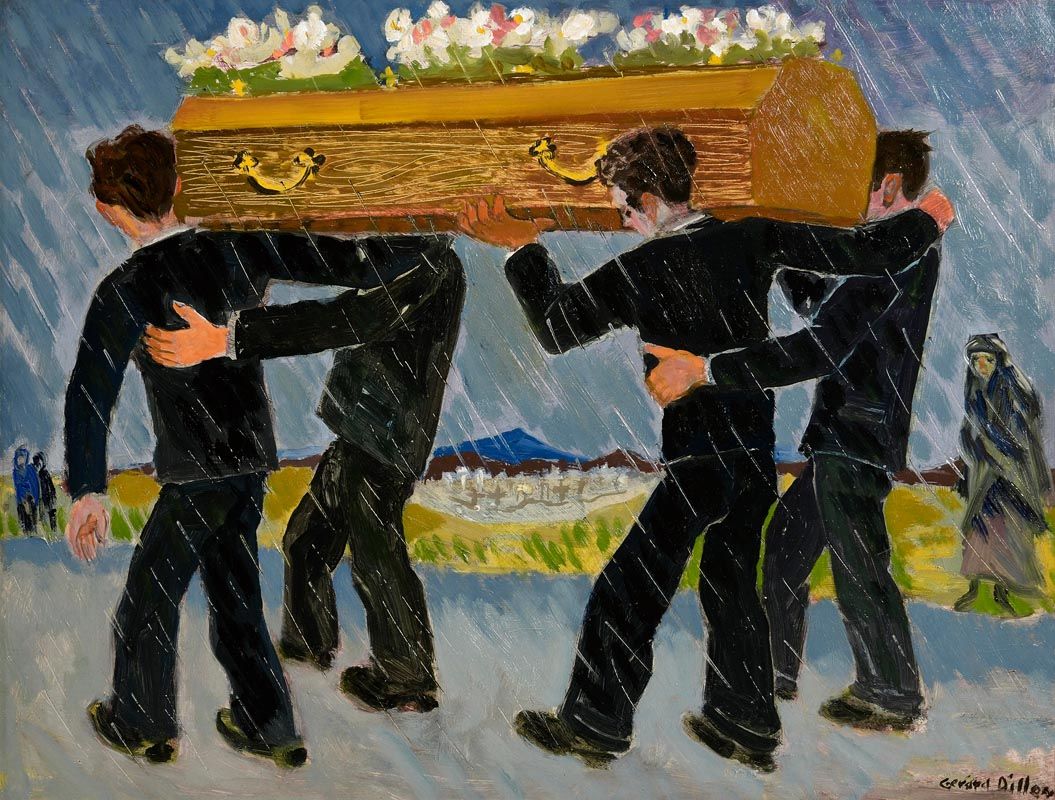
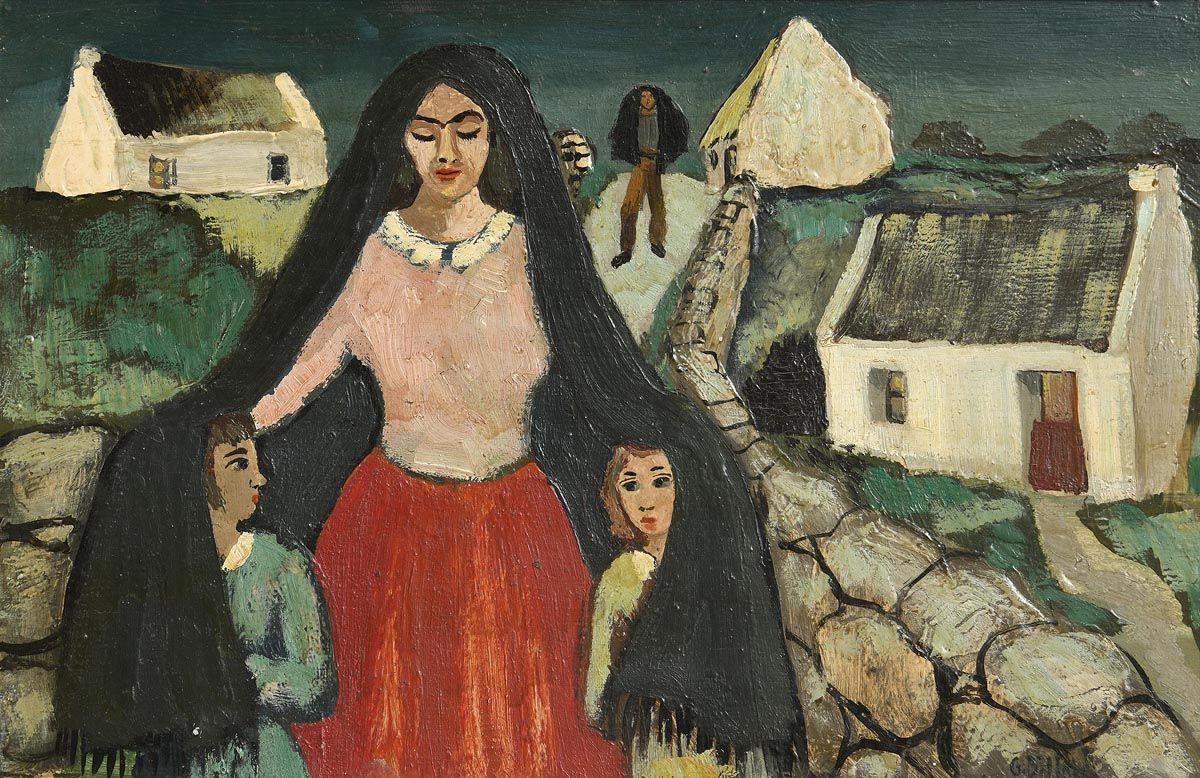
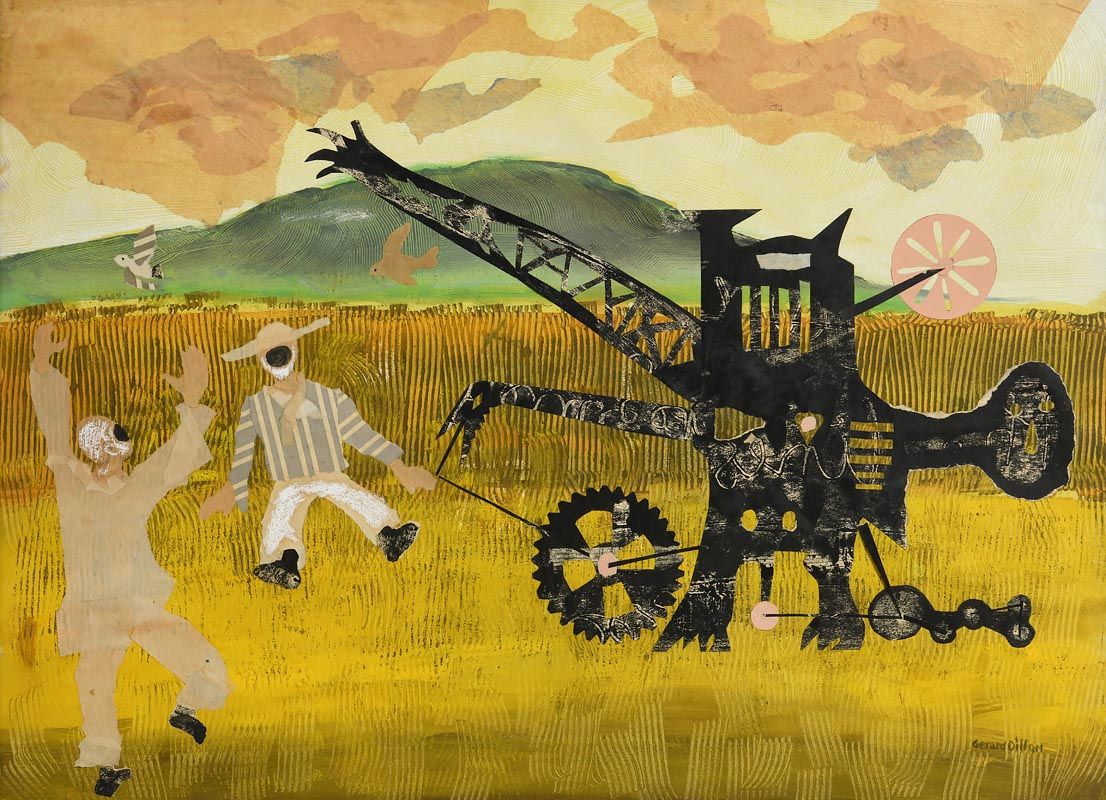
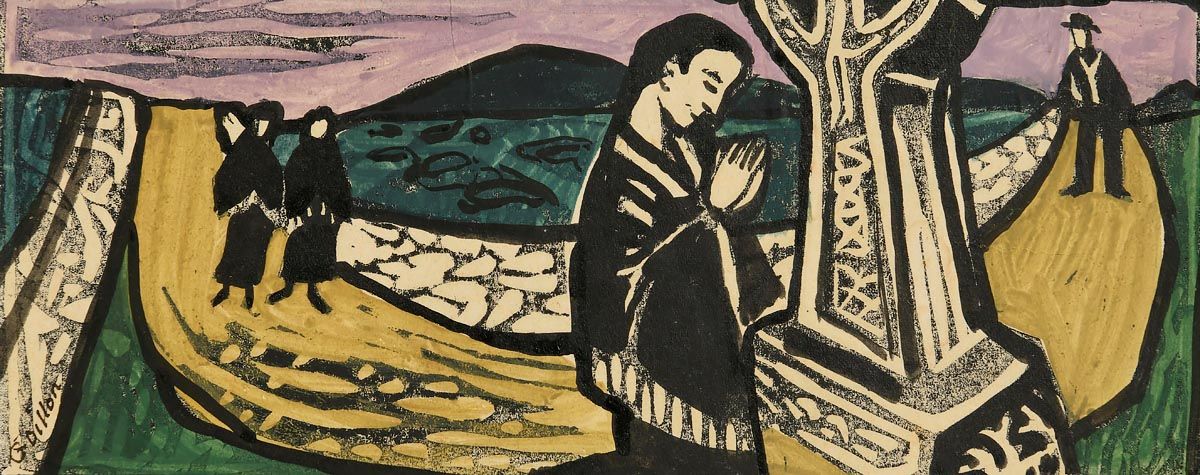

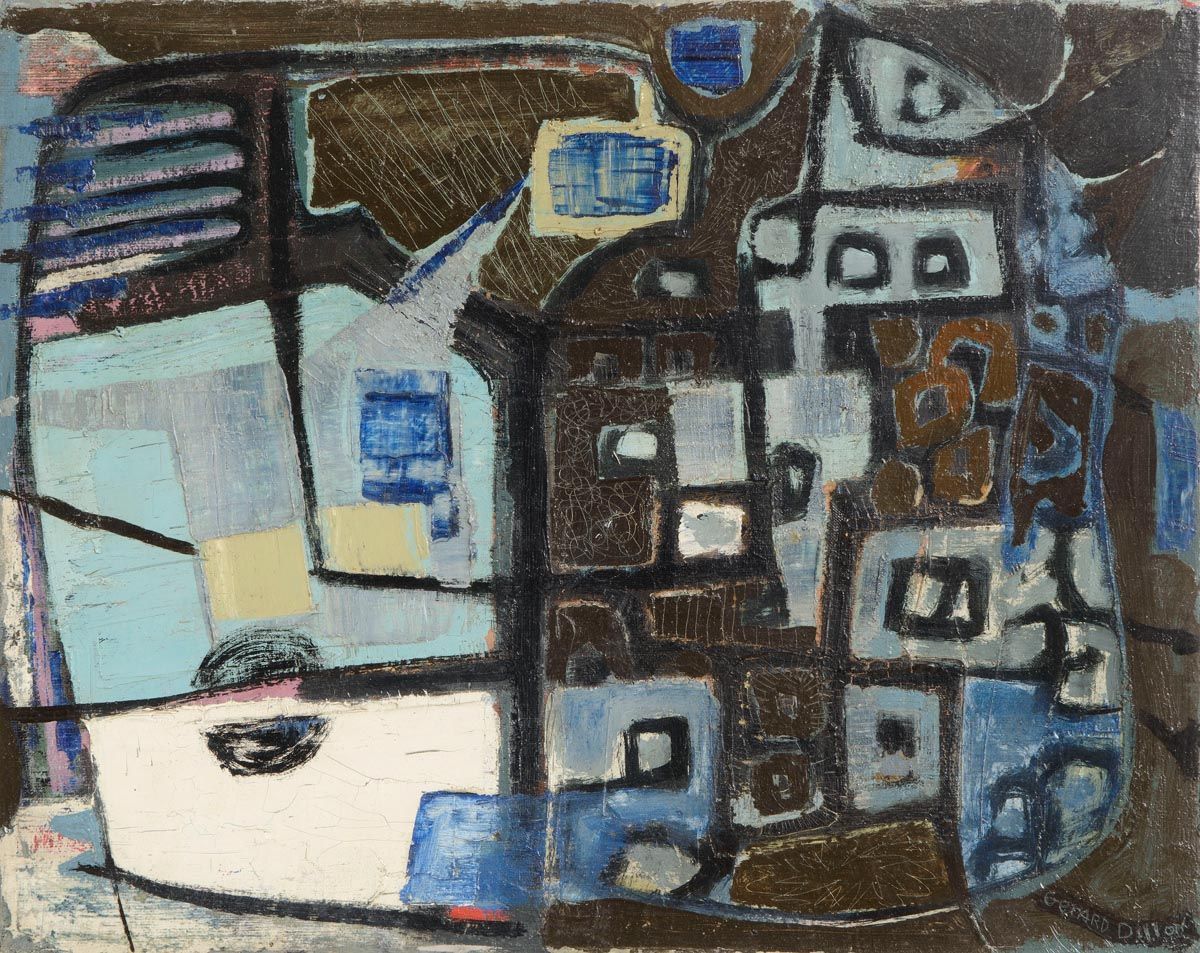
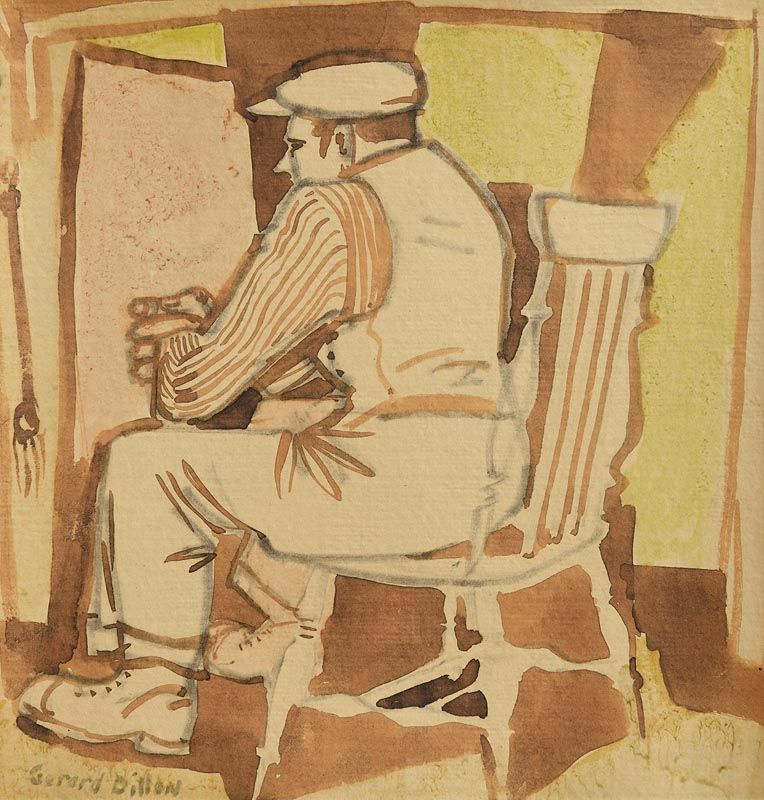

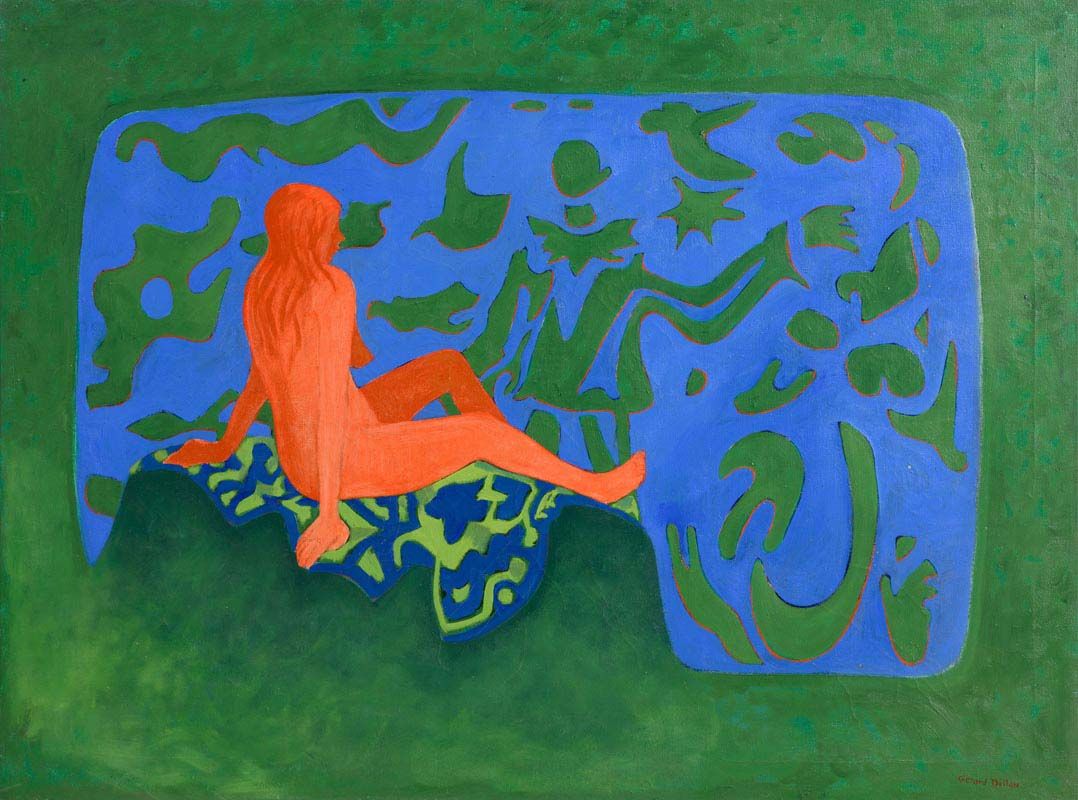
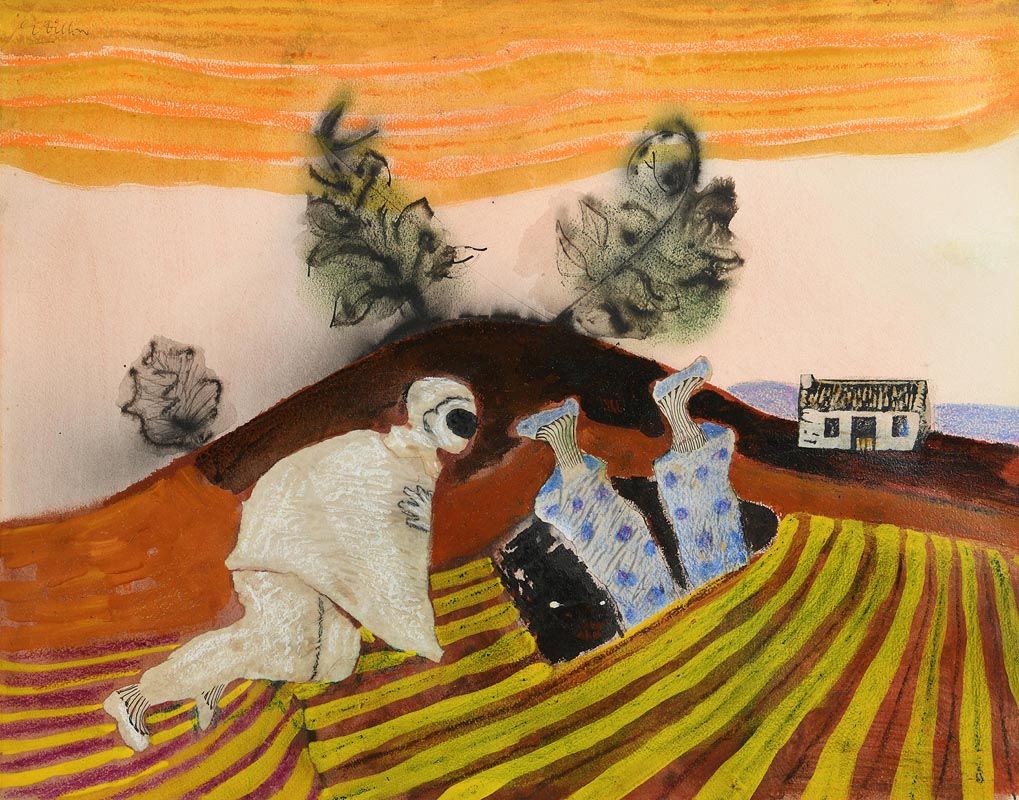

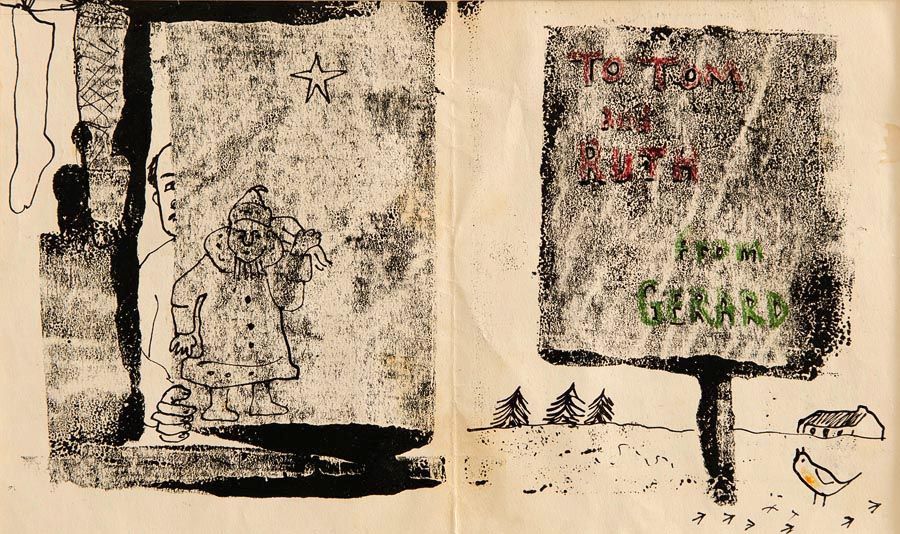
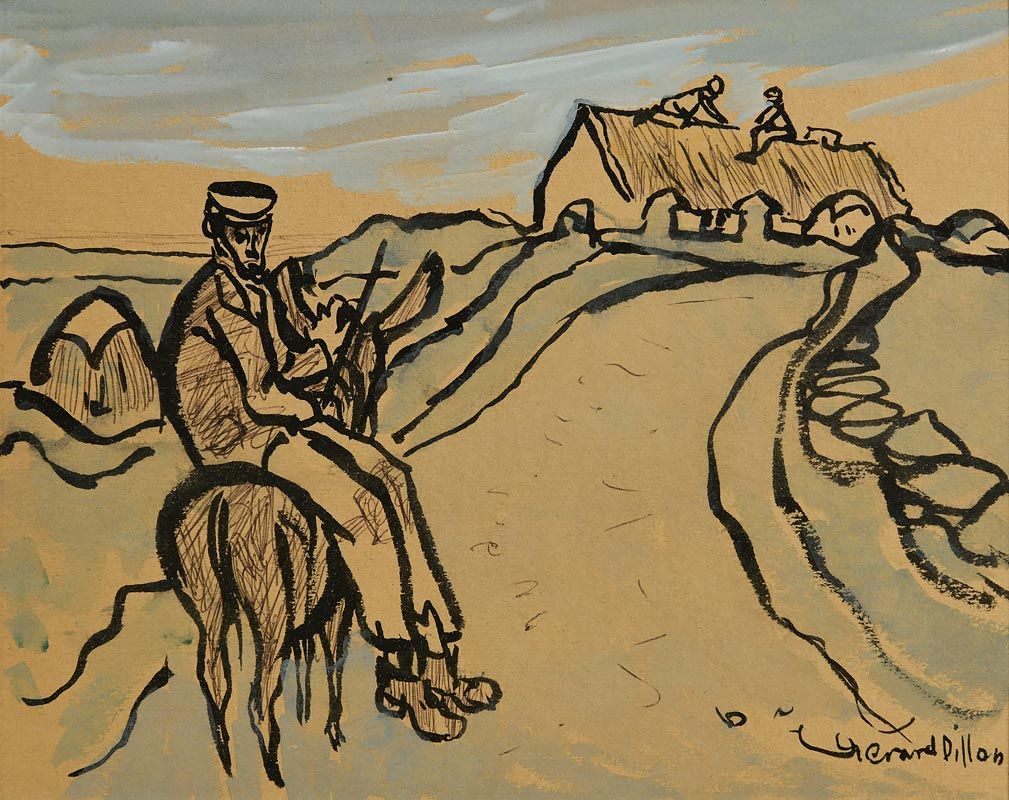
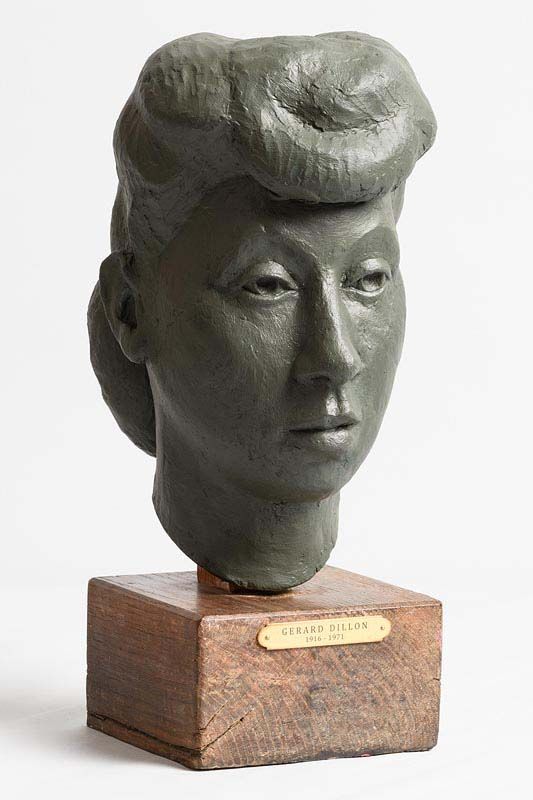
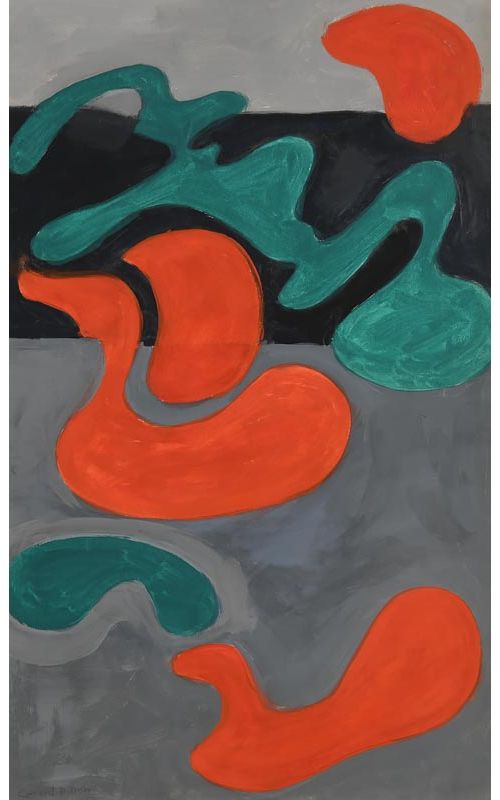
Testen Sie LotSearch und seine Premium-Features 7 Tage - ohne Kosten!
Lassen Sie sich automatisch über neue Objekte in kommenden Auktionen benachrichtigen.
Suchauftrag anlegen